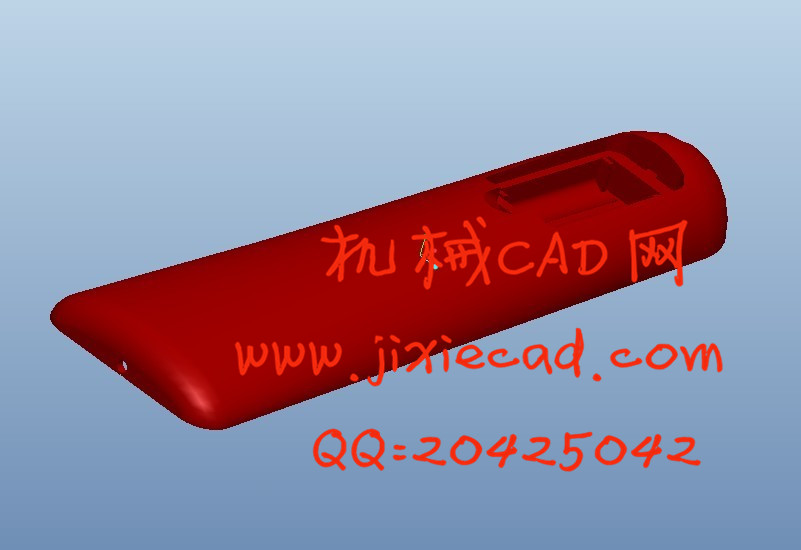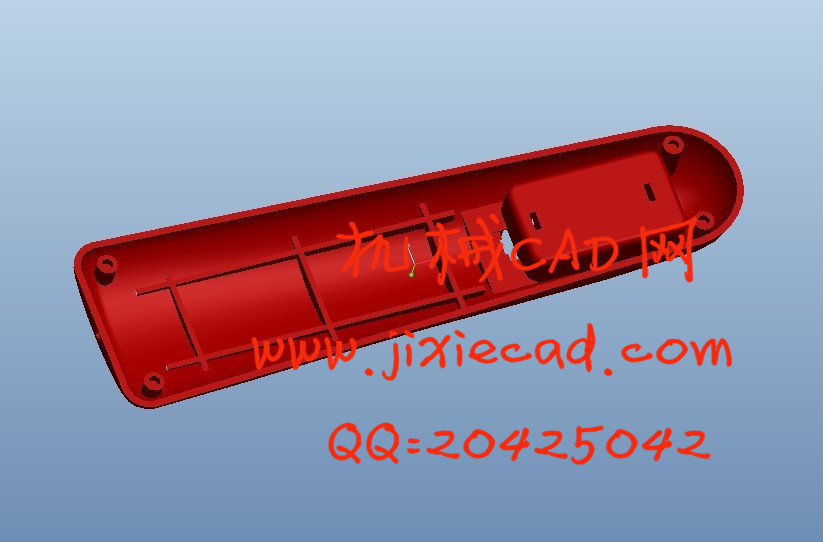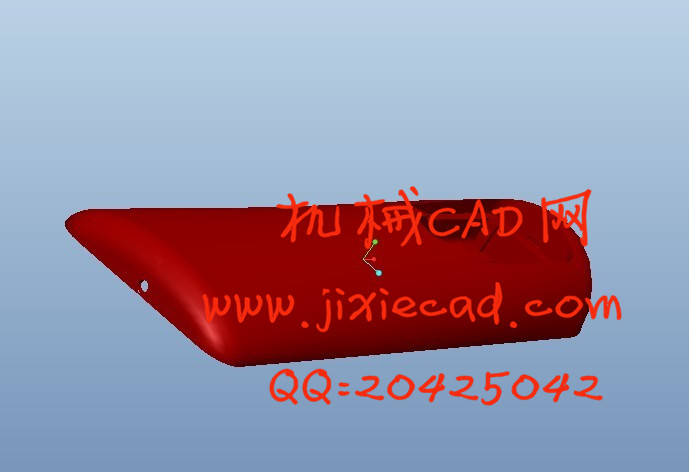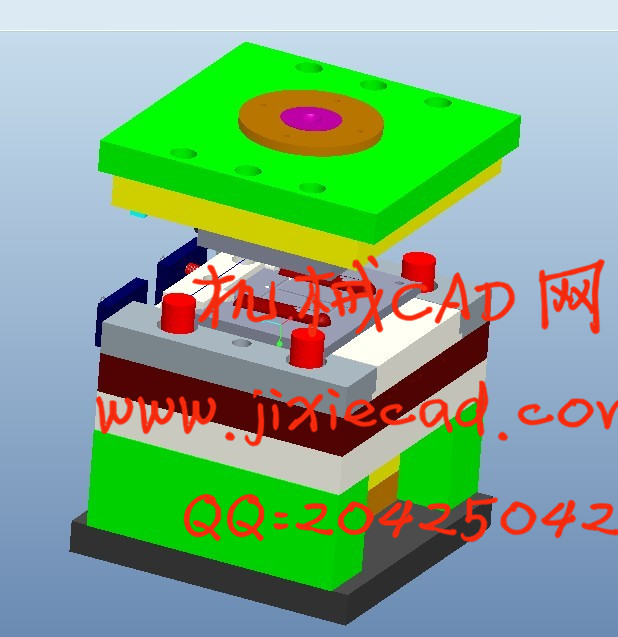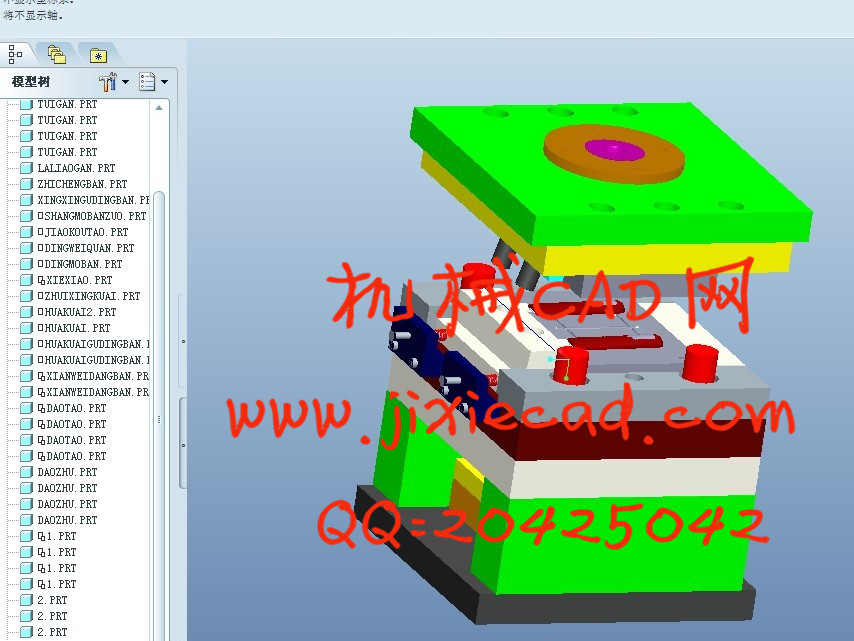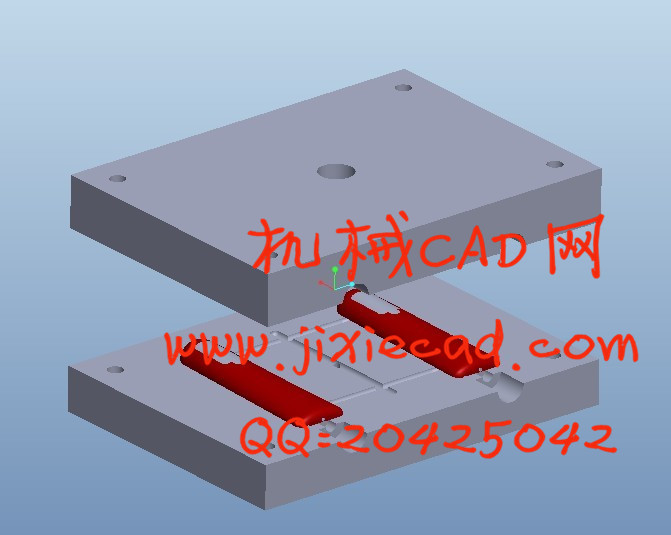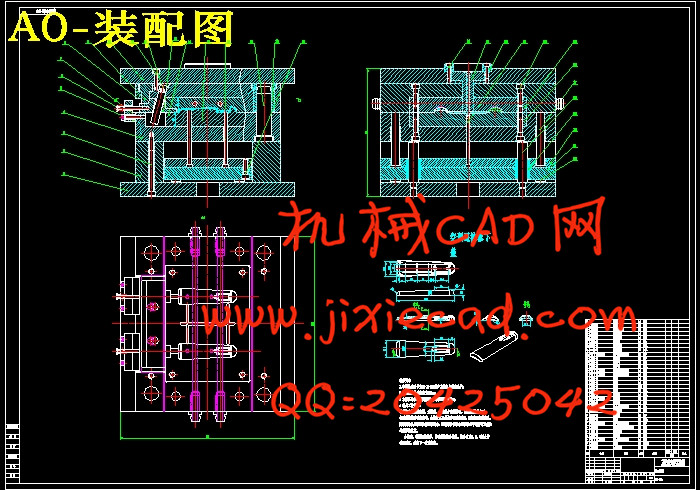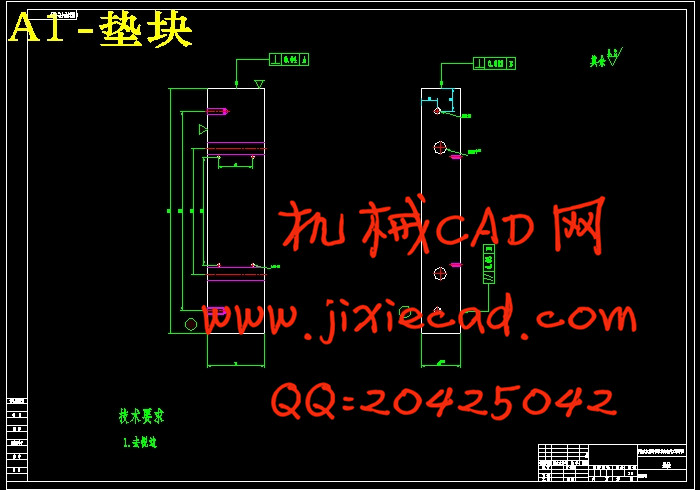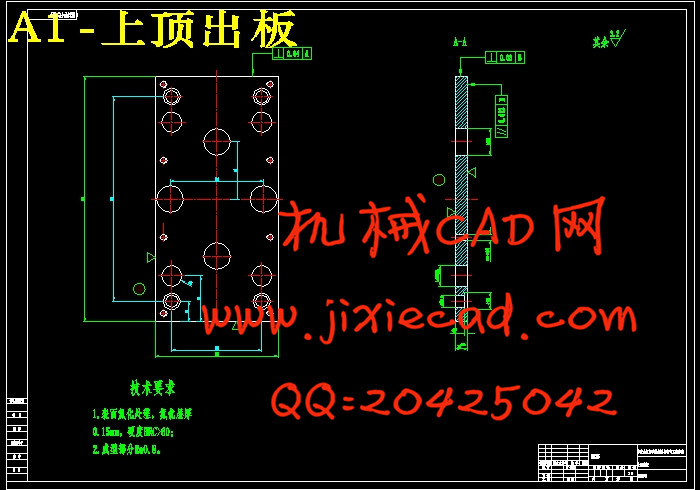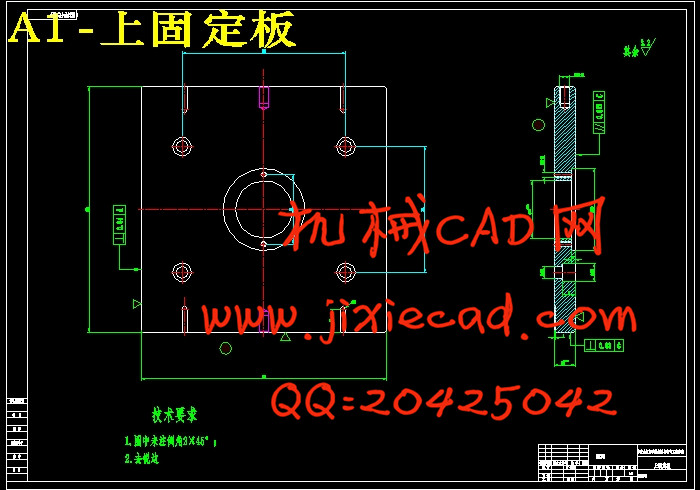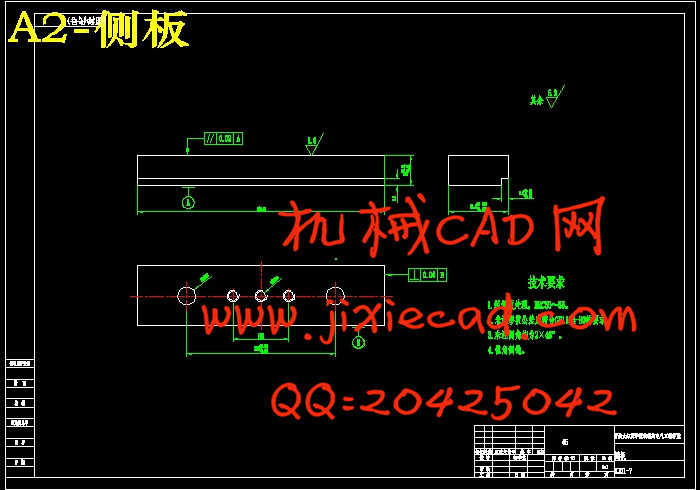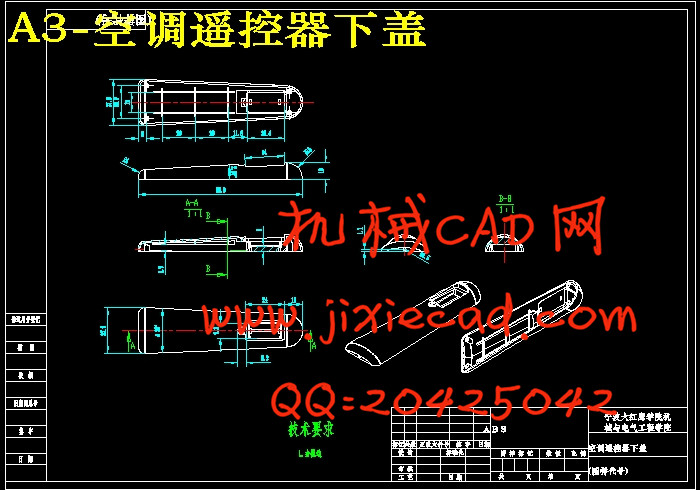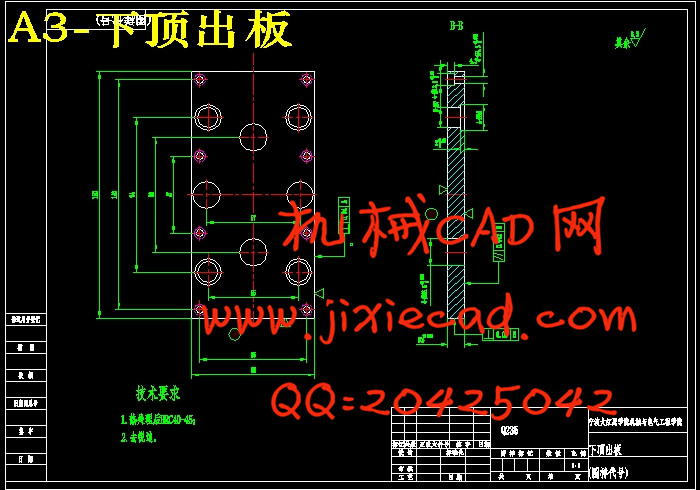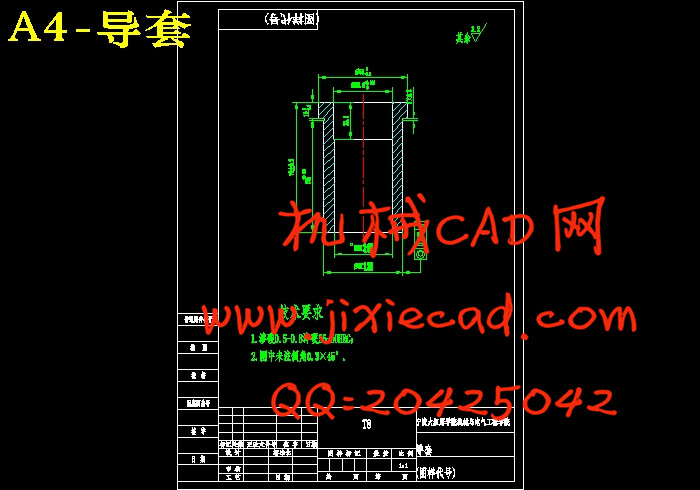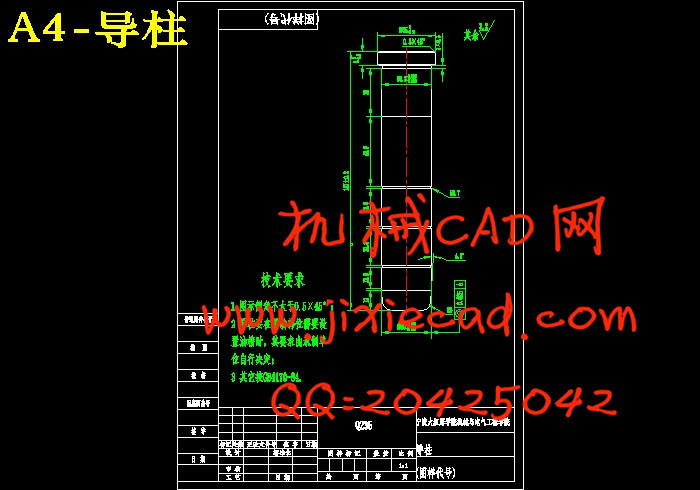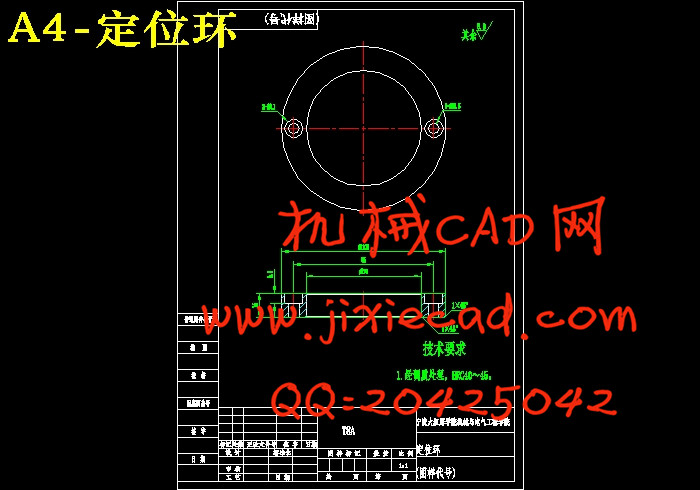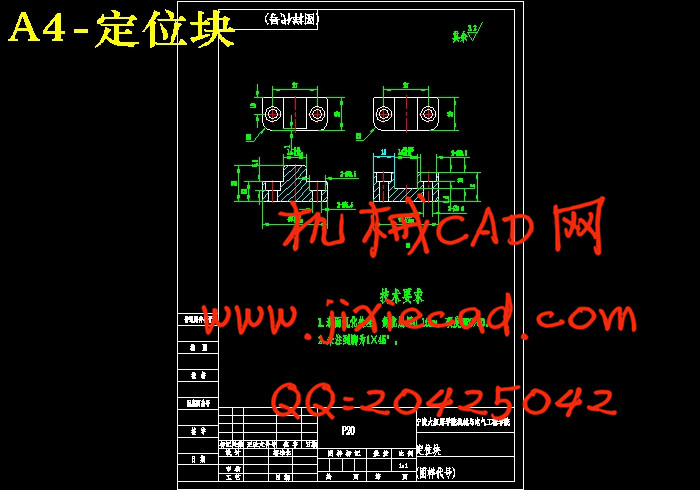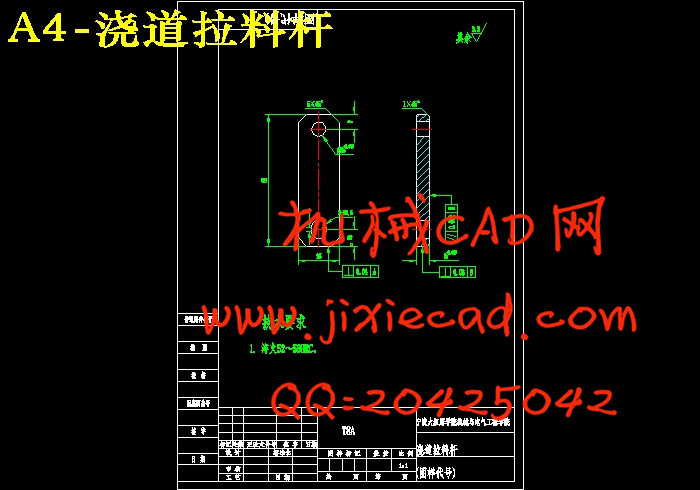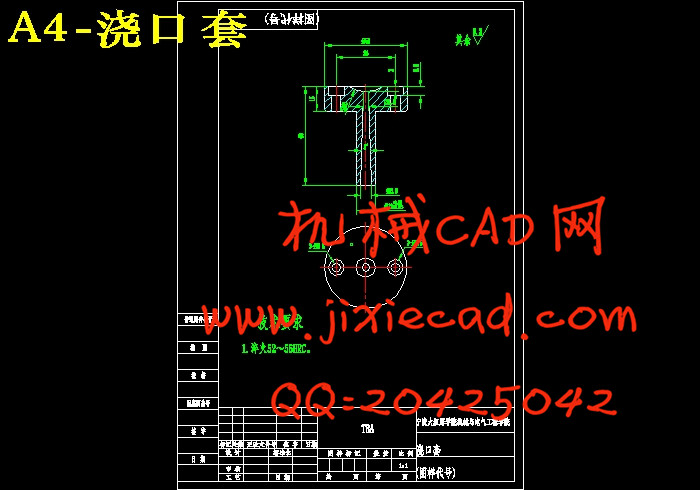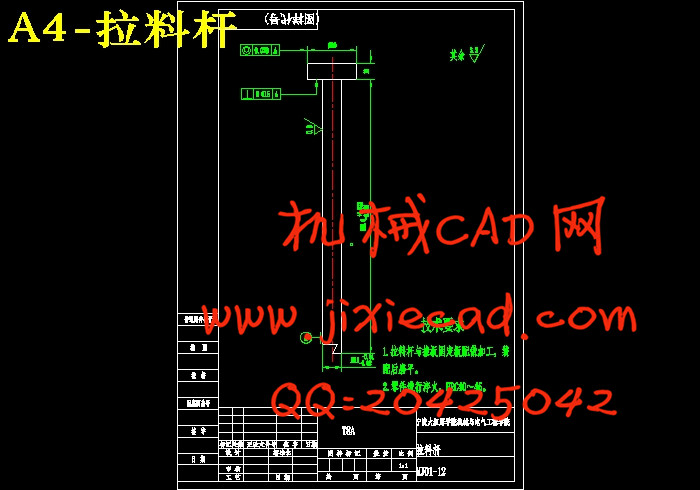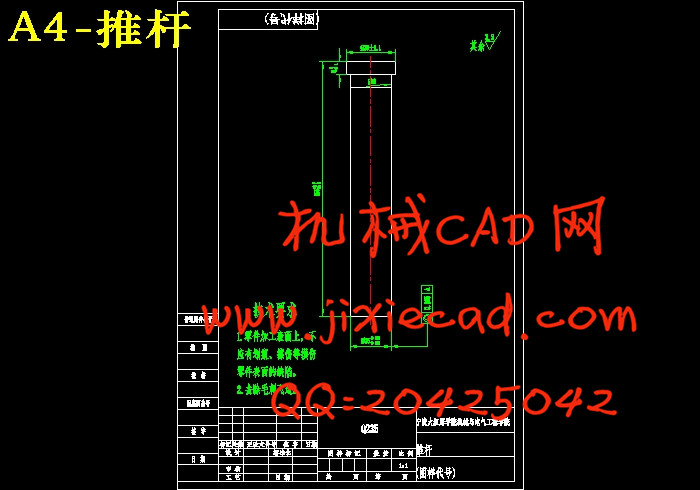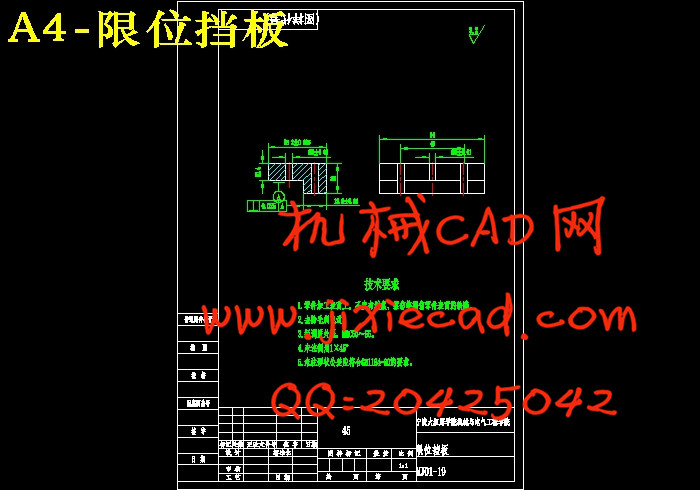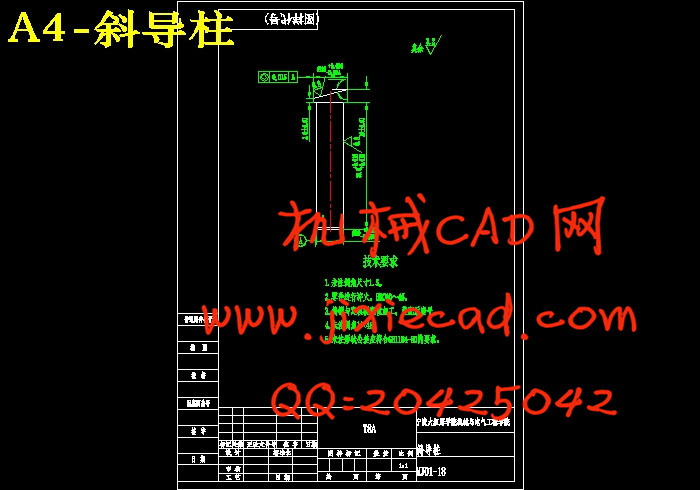设计简介
摘 要
随着各种性能优越的工程塑料的不断开发,工业、民业的各种塑料制品需要的不断增长,注塑工艺越来越多地用于制造领域成形各种性能要求的制品。而注塑模具的设计质量、注塑机应用等直接影响成形制品的生产效率、质量及成本。一副好的注射模具可成型上百万次,由于其寿命的延长,从另一方面降低了塑件的成型成本,并且好的模具由于更换,检修少,从而提高了其生产效率。为了满足日益发展的工业的要求和民需生活品的需要,我们应不断的研究开发,设计出能提高注射模性能的注射模,以满足各行各业的需要。在本设计中,通过运用CAD对空调遥控器后盖进行一模二穴的设计开发,其中包括凸、凹模的设计、推出机构的设计、注射机的选择与校核、浇注系统的设计、冷却系统的设计、模架的选择等各项工作。在本设计中,设计的重点在成型零部件即凸、凹模的设计和浇注系统、冷却系统的设计。其中浇注系统和冷却系统的设计是一副模具的设计灵魂,浇注系统的设计直接影响着塑件的成型质量和生产效率[1]。因此,对浇注系统的设计是注射模具设计的重点工作。而与此同时,模具的温度对塑件的质量和生产效率也着直接的影响,模具温度的控制直接影响着模具的凝固时间和收缩内应力,从而影响模具的成型周期长短和塑件质量好坏,及其表面粗糙度等。在本设计中着重设计了凸、凹模尺寸、浇注系统和冷却系统的尺寸及其系统结构。通过本次设计,我们首先学习了解了我国塑料模具的现状和发展状况、注射模的基本结构和注射模成型工艺过程以及模具设计的基本原理。
关键词:空调遥控器后盖;注射模;设计;PP
Abstract
With the superior performance of the continuous development of engineering plastics, industry, public sector, the needs of a variety of plastic products is growing, injection technology increasingly used in the manufacture of various performance requirements of forming the products. The quality of injection mold design, injection molding machine applications products, forming a direct impact on productivity, quality and cost. Mold can be a good injection molding millions of times, because of their longer life expectancy, on the other hand reduces the cost of plastic parts molding and die as a result of a good replacement, less maintenance, thereby increasing their production efficiency. In order to meet the growing industry demands and the people need to live goods, we should continue research and development designed to enhance the performance of injection mold injection mold in order to meet the needs of all walks of life.In this design, through the use of CAD base on the remote control to carry out a second cave-mode design and development, including convex and concave mold design, the introduction of body design, the choice of injection machine and check, gating system design, cooling system design, selection of moldbase work. In this design, is designed to focus on parts and components in the molding that is convex and concave mold design and casting systems, cooling system design. One of gating system and cooling system design is the soul of a mold design, gating system design of a direct impact on the molding plastic parts quality and production efficiency. Therefore, the gating system design is the focus of injection mold design work. At the same time, mold temperature on the plastic parts of the quality and production efficiency is also a direct impact, mold temperature control of a direct impact on the clotting time mold and contraction stress, thus affecting the molding cycle the length of mold and plastic parts of good quality bad, and its surface roughness. During the design focused on the design of the convex and concave mold size, gating system and cooling system size and its system architecture. Through this design, we first learn to understand the plastic mold of our current situation and development situation, the basic structure of injection mold and injection-casting process, as well as the basic principles of mold design.
Key Words: remote base, injection mold, design, PP
目 录
摘 要 IAbstract II
目 录 III
第1章 绪论 1
1.1蓬勃发展的模具工业 1
1.2塑料模具工业的现状和技术的主要发展方向 1
第2章 空调遥控器后盖塑料模工艺设计 4
2.1空调遥控器后盖塑件的工艺分析 4
2.1.1塑料材料的性能及基本成型工艺参数 4
2.1.2空调遥控器后盖塑料的选材 5
2.1.3 PP材料成型特性 5
2.2注射成型基本过程 6
2.3空调遥控器后盖的设计件 8
第3章 注射机的选择和校核 8
3.1注射机规格的选择 8
3.2注射机的校核 9
3.2.1注射机注射容量的校核 9
3.2.2注射机注射压力的校核 10
3.2.3注射机锁模力的校核 10
3.2.4注射机模具厚度校核注射机模具厚度校核 10
3.2.5注射机最大开模行程校核 11
3.3确定型腔数目和分模面的选择 11
3.3.1确定型腔数目 11
3.3.2分模面的选择 11
第4章浇注系统和冷却系统设计 13
4.1浇注系统设计 13
4.1.1主流道的设计 13
4.1.2分流道的设计 13
4.1.3浇口设计 14
4.1.4冷料穴和拉料杆设计 15
4.1.5浇注系统的平衡 15
4.2排气系统的设计 15
4.3冷却系统设计 16
4.3.1设计冷却系统的必要性 16
4.3.2冷却系统尺寸计算 17
第5章 其他零部件结构设计 18
5.1脱模机构设计 18
5.1.1脱模机构的分类 18
5.1.2脱模机构设计原则 18
5.2导向机构设计 18
5.2.1导向机构设计原则 18
5.2.2导柱的外形尺寸计算 19
5.2.3导向孔的设计 19
5.2.4导柱的数量和布置 20
5.3定位圈 20
5.3.1定位圈的定义 20
5.3.2导柱的数量和布置 20
5.4主流道衬套 20
5.5其他结构零件设计 20
第6章 模具加工工艺设计 22
6.1 坯料的确定 22
6.2 模板的平面加工 22
6.2.1 平面的粗加工 22
6.2.2 平面的半精加工 22
6.2.3 平面的精加工 22
6.2.4 薄板的精加工 23
6.3 孔及孔系的加工 23
6.3.1 孔系的加工 23
6.3.2 导柱导套的孔加工 24
第7章 绘制模具图 25
7.1 PRO/E创建模具 25
7.2 绘制总装配结构图和部分零件图 26
结 论 27
参考文献 28
致 谢 29


